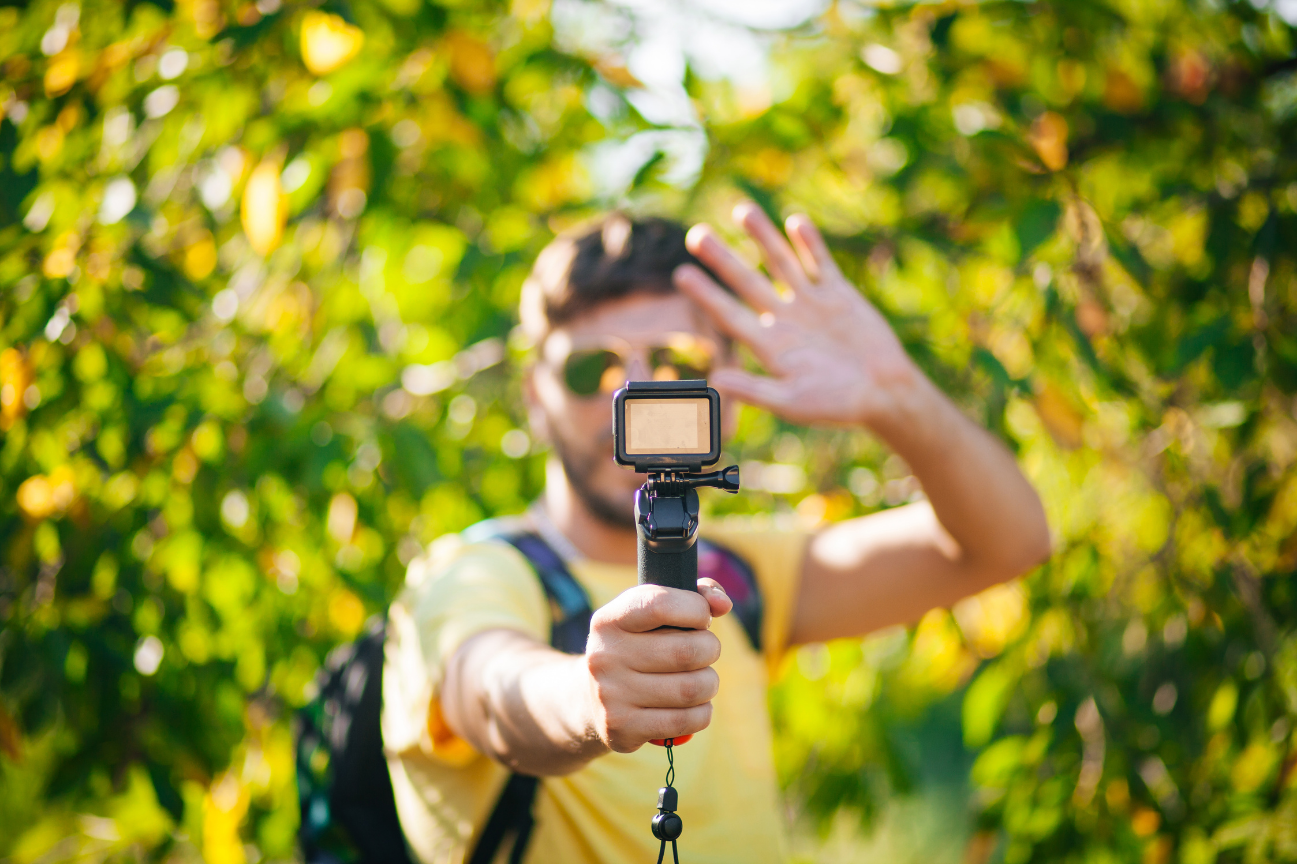In tough economic times like these, planning for museum fundraising events can feel discouraging. With shrinking budgets and increased competition for grants and donations, it can feel like the smartest move is to wait for more favorable conditions.
But museums don’t thrive by waiting. Sure, standing out has never been more difficult. But that doesn’t mean you need a massive budget. Perhaps, just smarter and more creative strategies.
From hosting themed events and launching crowdfunding campaigns to selling merchandise and partnering with local businesses, there are plenty of creative ways to raise money without breaking the bank.
Stick around because we’re sharing over 11 actionable fundraising ideas for small museums that can bring in support this 2025.
Identify Your Museum Fundraising Goals First
Let’s say you manage a local historical society museum that focuses on civil rights history from the late 1960s to the early 1970s. Recently, you’ve seen striking parallels between past and present, and you want to document today’s movement by collecting oral histories and artifacts from modern-day community leaders.
To do that, you need funding for recording equipment and a consulting oral historian to guide the project professionally.
That’s a powerful, clear objective, and it’s the kind of focus that separates successful museum fundraising campaigns from those that fizzle out.
When you define your fundraising goal early, everything else starts to click into place. Your messaging gets sharper. Your team stays aligned. Donors understand exactly what their contributions will achieve.
Whether you're raising $15,000 to restore a local landmark model, funding a traveling education program, or renovating outdated exhibit space, clarity gives your campaign the traction it needs.
General appeals might bring in a few dollars. But purpose-driven ones bring in lasting support.
If you're in the early stages of developing a museum, our comprehensive guide on how to start a museum offers crucial advice and steps to lay a strong foundation and attract initial funding.
Top Museum Fundraising Ideas You Should Try in 2025
Innovative fundraising ideas can help attract more donors, increase engagement, and support your museum’s programs and initiatives.
Whether you’re planning art museum fundraising events or launching online donation drives, these strategies will help you achieve your fundraising goals.
Raise Funds Through Email Marketing Campaigns
Email marketing is a powerful tool for reaching out to your audience. By crafting compelling messages and highlighting your museum's needs and achievements, you can encourage donations.
Regular updates and clear calls to action can significantly boost your fundraising efforts.
Use Social Media for Fundraising
Social media platforms offer an excellent opportunity to connect with a broader audience. Use these platforms to share stories, promote fundraising campaigns, and engage with followers.
Interactive posts, live events, and sharing behind-the-scenes content can make your fundraising more relatable and effective. You can also collaborate with local businesses for joint events, amplifying your reach and community involvement.
To maximize the impact of your social media efforts, it's essential to have a comprehensive strategy in place. Our detailed museum marketing guide provides valuable insights and tips on how to effectively use social media to attract more visitors and increase donations.
Join Popular Crowdfunding Platforms
Crowdfunding platforms like Kickstarter and GoFundMe can help you reach a larger audience and gather small donations from many contributors.
This is especially effective when you use crowdfunding to support specific projects. These platforms are ideal for specific projects or initiatives, allowing you to set clear goals and deadlines for your fundraising efforts.
Apply for Grants from Local Trusts and Foundations
Grants from local trusts and foundations can provide substantial funding for museums. This often includes grant writing for cultural initiatives that align with your mission. Be sure to customize each application to meet the specific criteria of the grant provider.
Offer Patron Programs
Patron programs can create a dedicated support base for your museum. By offering exclusive benefits such as special events, behind-the-scenes tours, and recognition in museum publications, you can attract high-level donors.
These programs build donor loyalty through membership programs and encourage monthly giving for sustained support, especially when designed with tiered incentives.
Arrange Virtual and In-Person Events
Events are a great way to engage your community and raise funds. Whether virtual or in-person, events like galas, workshops, and lecture series can draw in donations and raise awareness about your museum's needs.
In fact, many museums host annual galas to secure high-value donations, while also generating community support through special events.
Offer Unique Museum Tours and Workshops
Providing unique tours and workshops can attract visitors and generate additional revenue. Specialty tours, educational workshops, and themed events can appeal to different audience segments and encourage repeat visits.
Creating unique experiences is key to drawing visitors. For art-focused strategies, see our marketing tips for art galleries. These tips can enhance your museum's appeal and engage your audience.
Organize Charity Auctions
Charity auctions can be both fun and profitable. Gather unique items or experiences to auction off, either online or at a live event. This tactic utilizes silent auctions to boost revenue while also attracting new supporters who enjoy experiential giving opportunities.
Create Tiered Membership Programs
Membership programs with tiered levels offer varying benefits based on donation amounts. This structure can encourage donors to give more to receive additional perks, such as exclusive access to exhibits, free admission, and special discounts.
Use Museum Shops and Special Merchandise
Museum shops and exclusive merchandise can be significant revenue sources. Offer unique, high-quality items that reflect your museum's themes and collections. Promote these items through your website, social media, and during events.
Encourage Peer-to-Peer Fundraising
Peer-to-peer fundraising leverages your supporters' networks to raise funds. Encourage volunteers and patrons to create their fundraising campaigns, share their stories, and solicit donations from their friends and family.
Utilize Online Donation Platforms
Consider using some of the best fundraising systems for museums to streamline the donation process. Ensure your website has a user-friendly donation page, and consider partnering with platforms like PayPal, Stripe, or dedicated donation software to manage contributions efficiently.
How to Plan Your Fundraising Strategy
Creating a solid fundraising strategy is key to achieving your museum’s financial goals. By planning ahead, you can make the most of your resources and efforts.
This will guide you through the essential steps to develop an effective fundraising plan, ensuring your museum's success and sustainability.
- Set Clear Goals and Objectives: Define what you want to achieve with your fundraising for museums. Clear goals help you measure success and stay focused.
- Allocate Your Budget: Determine how much you can spend on fundraising activities. A well-planned budget ensures you use your resources effectively.
- Analyze Competitors: Look at what other museums are doing to raise funds. Learn from their successes and challenges to refine your strategy.
Tips to Make Your Museum Stand Out for Fundraising
What sets museums apart is their ability to create immersive, memorable experiences that connect people to history, art, and culture.
Think about themed donor events, after-hours guided tours, and naming opportunities for benefactors. Some museums even offer “curator-for-a-day” experiences or behind-the-scenes sneak peeks into rarely seen collections.
Consider strategies that invite philanthropists to private previews or involve board members in fundraising strategy to add value and credibility. When your approach is personal and distinctive, your donors feel like part of the mission.
A notable example is the Museum of East Anglian Life, which launched an “Adopt a Piggy Bank” campaign to mark its 50th anniversary. The campaign was inspired by a local heritage breed, the Large Black Pig.
Visitors could take home a custom piggy bank for a small refundable deposit and were encouraged to fill it with donations before returning it to support the museum’s Heritage Farm. This simple, low-cost initiative tapped into local culture, created emotional engagement, and helped boost contributions significantly.
Key Takeaways
- Diversify Fundraising Methods: Use a mix of online and offline strategies to reach a broader audience.
- Engage Your Community: Build strong relationships with your community through events, social media, and personalized outreach.
- Leverage Technology: Utilize digital tools and platforms to streamline fundraising and reach more potential donors.
Frequently Asked Questions
What is the Most Profitable Fundraising Event?
The most profitable fundraising event often depends on your audience and resources. However, charity auctions and gala events tend to attract high-value donations due to their exclusive nature and the opportunity for donors to bid on unique items or experiences.
How Important are Grants for Museum Funding?
Grants are crucial for museum funding as they provide substantial financial support for specific projects, operational costs, and expansions. Applying for grants can significantly supplement other fundraising efforts and ensure the sustainability of museum activities.
Should Museums Engage with Local Businesses for Fundraising?
Yes, engaging with local businesses can be highly beneficial. Partnerships with businesses can provide sponsorships, in-kind donations, and collaborative event opportunities. This enhances your fundraising efforts and helps build long-term local business support for the museum.
Is it Hard to Raise Funds for Museums?
Raising funds for museums can be challenging due to competition for donations, limited resources, and the need to continually engage and inspire potential donors.
However, with the right strategies and creative approaches, securing the necessary funding to support museum operations and projects is possible.












